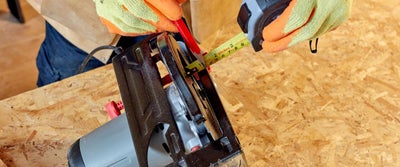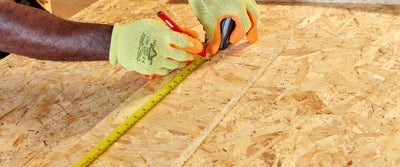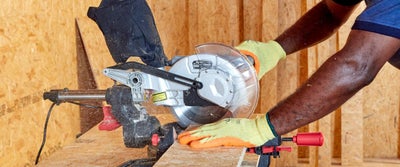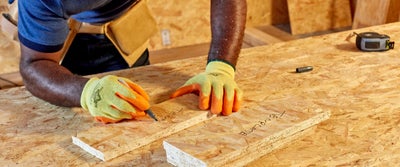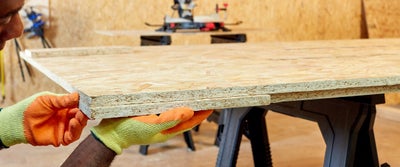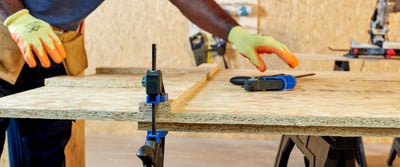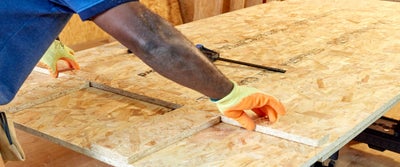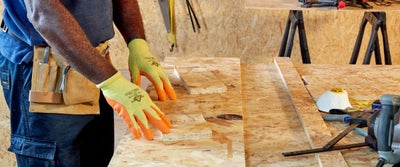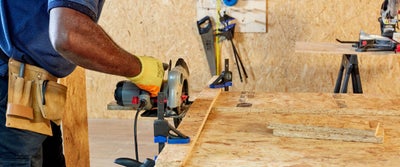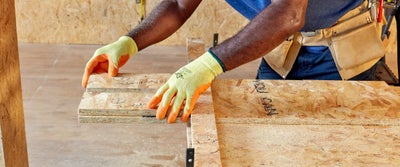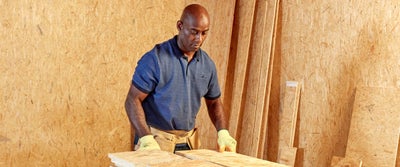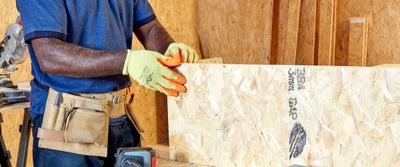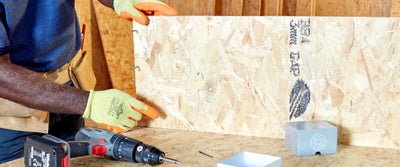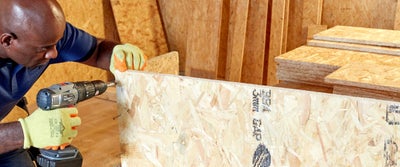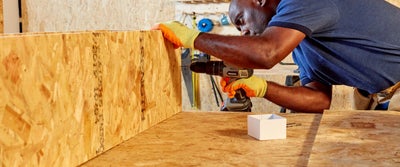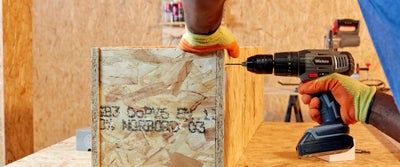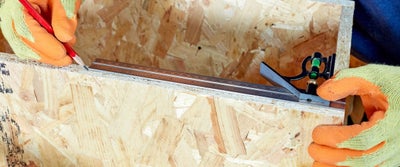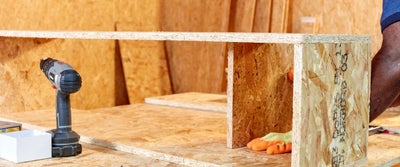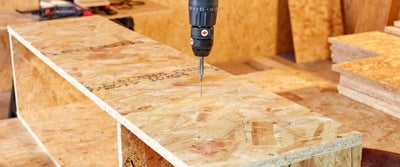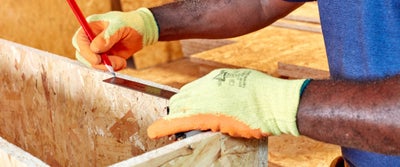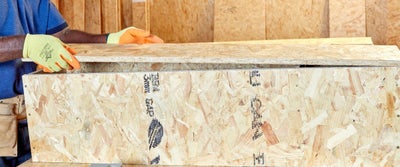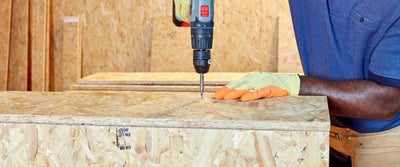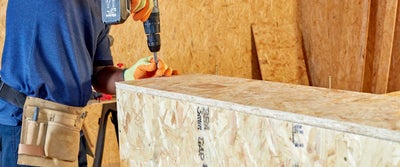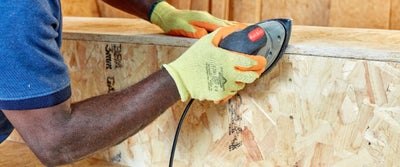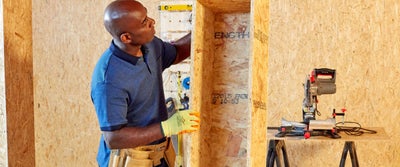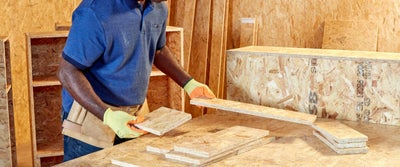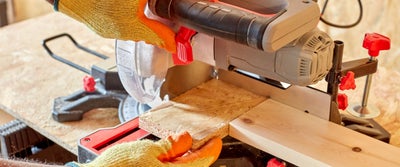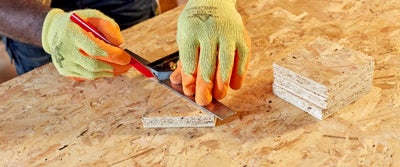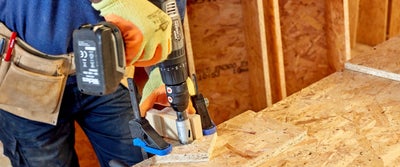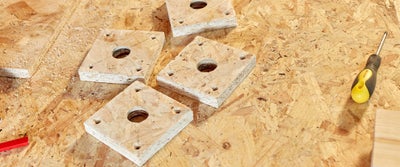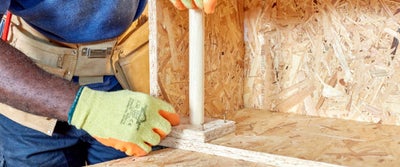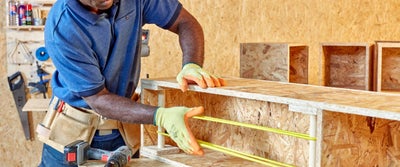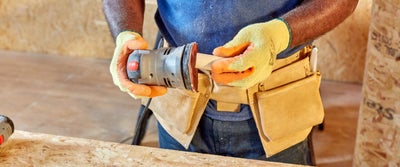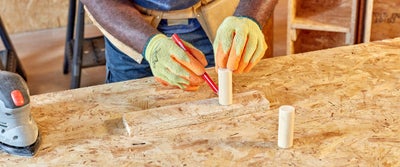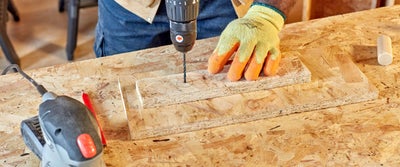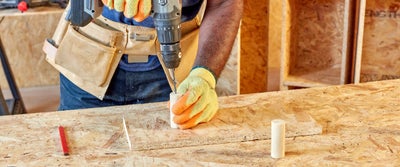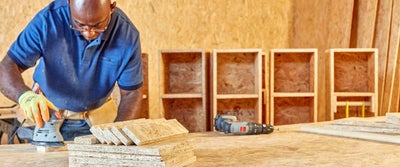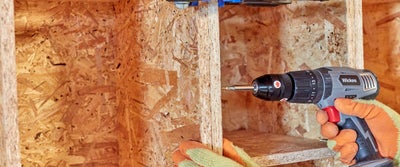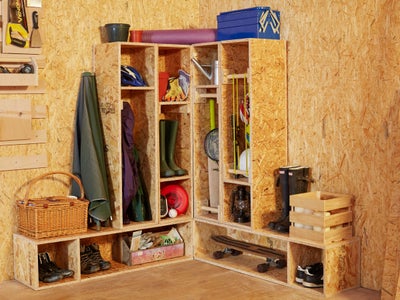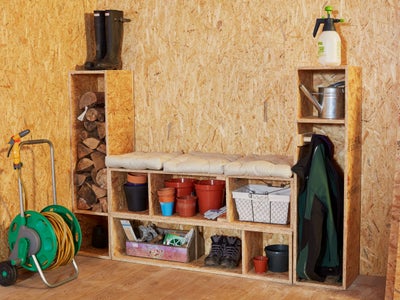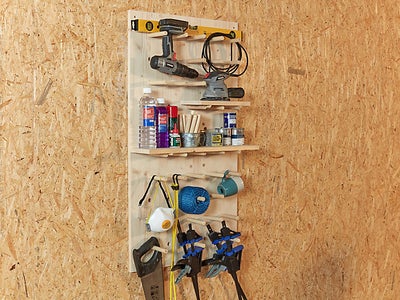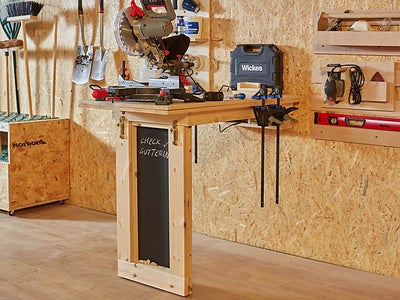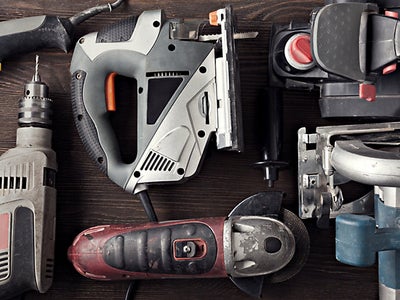How to build modular storage units
TOOLS
MATERIALS
SAFETY
Planning & preparation
- We are going to show you how to make a modular storage unit step by step. Constructed from OSB 3 board, this unit can be configured to your bespoke requirements. We have added flexible accessories including additional shelving, a rail and pegs to store your garage or shed odds and ends.
- The materials for this project will cost under £100 and will take a DIYer with moderate skill, approximately 5 hours to build.
- The constructed modular storage will make six boxed units, each measuring 316 x 327 x 1220mm.
- Modular storage can be made in any shape or size. This unit is designed to optimise large sheet timber, however to make bespoke storage for your spaces, simply adjust the dimensions, quantity of boxes and accessories.
- Ensure your workbench and power tools are close by for ease of construction.
Doing it right
- Our step by step instructions and cutting list have been designed as a guideline to build a six box modular storage unit from four sheets of General Purpose OSB 3 Board (11mm x 606mm x 1220mm).
- We are using OSB 3 board for its versatility and aesthetic, however you could also use plywood or MDF for other applications including internal use.
- A chop saw or circular saw will ensure that your timber is cut accurately with precision speed. If you don’t have access to power tools, this project can also be completed with a universal saw. Ensure your timber is securely clamped, then slowly cut along your scored line with a clean and sharp saw blade.
- Once you have chosen a position for your modular storage unit, configure the boxes then secure together with wood screws. We also recommend screwing your boxes to the wall for additional support.
- We have made wooden jig templates for this construction to aid cutting speed, accuracy and repetition. If you prefer, you can measure, mark and cut as you work, using a tape measure or metal ruler.
- Watch our top tip videos for our Wickes DIY skills, tips and advice.
Staying safe
- For safety, we recommend wearing protective goggles and heavy-duty gloves when using a chop saw or drill.
- Check that your materials are securely clamped to your workbench surface before you begin making any cuts.
- Inspect the cables and blade of the chop saw and circular saw before they are plugged in, to ensure they are in good condition. If any of the elements need to be replaced, make sure this is done before construction begins.
- Ensure your construction area is well lit and ventilated.
- Always check the manufacturer’s label for recommendations before applying any stains, paints or treatments.
Cutting list
View and download the cutting list
here
